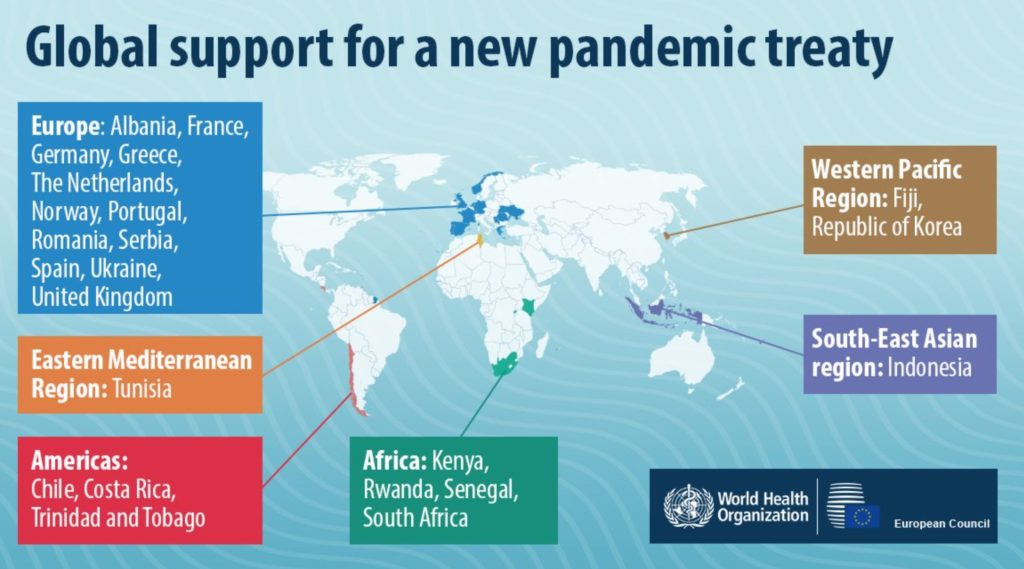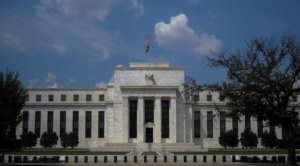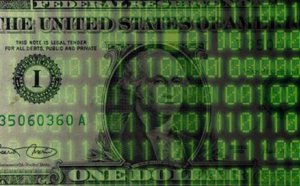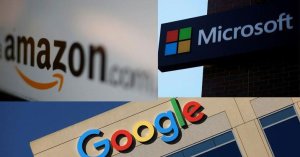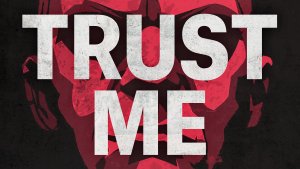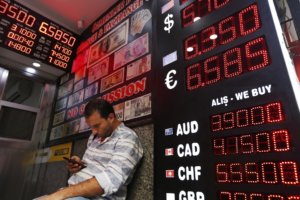It’s more than a bit bizarre that until Elon Musk bought Twitter, most policy types apparently did not see a risk that huge platforms like Facebook and Twitter could be controlled by people with a clear political agenda. While just about everyone had some complaints about the moderation of these and other commonly used platforms, they clearly were not pushing Fox News style nonsense.
With Elon Musk in charge, that may no longer be true. Musk has indicated his fondness for racists and anti-Semites, and made it clear that they are welcome on his new toy. He also is apparently good with right-wing kooks making up stories about everything from Paul Pelosi to Covid vaccines. (Remember, with Section 230 protection, Musk cannot be sued for defaming individuals and companies by mass-marketing lies, only the originators face any legal liability.)
If the hate and lies aren’t enough to make Twitter unattractive to the reality-based community, the right-wing crazies are putting together their lists of people to be purged. We don’t know who they will come up with, and what qualifies in their mind for banishment. We also don’t know whether the self-proclaimed free speech absolutist Elon Musk will go along, but there certainly is a risk that Musk will want to keep his friends happy.
In that case, Twitter may go the way of Truth Social and Parlor, which would be unfortunate, but probably better than having a massive social media platform subject to Elon Musk’s whims. But we should still be asking how we can get in a situation where one right-wing jerk can have so much power?
The Problem of Media Concentration Is Not New
The Musk problem is hardly new. After all, Rupert Murdoch has been broadcasting his imaginary world to the country for decades, highlighting pressing national issues like the War on Christmas and President Obama’s tan suit.
But the problem goes well beyond Murdoch. Media outlets are owned and controlled by rich people and/or large corporations. They exist first and foremost to make money. While there are some cases where owners may genuinely have a commitment to using their news outlet to serve the public, for example the Sulzberger family, which has controlled the New York Times for more than a century, these are the exceptions.
And, even with the exceptions, their perception of the public good is an extremely wealthy person’s perception of the public good. That may not be the same as the perception of an average working person struggling to get by.
As far as the for-profit enterprises, news outlets have to be concerned about getting advertising. That may make them less likely to report news that will reflect poorly on major advertisers. That means things like both-siding the role of the fossil fuel industry in global warming, or downplaying the windfall that corporations got from Trump’s 2017 tax cut.
This ownership structure could reasonably cause us to question the neutrality of news from outlets like CNN (owned by AT&T), ABC (owned by Disney), or NBC (owned by GE). But Musk’s takeover of Twitter takes the problem a step further. The viewership of each of the networks’ news shows numbers in the single digit millions. Twitter has almost 80 million active users in the United States. This means it matters much more if Twitter is taken over by a right-wing jerk than your average television network.
Alternatives to Corporate Control
Even though the media are incredibly important in shaping people’s view of the world, there has been remarkably little attention to the issue from most liberals or progressives. There are some small, and poorly funded, organizations, like Fairness and Accuracy in Reporting and Media Matters, which do focus on the issue. And there are a few prominent intellectuals who have written on the topic, like Rick McChesney, Dan Froomkin, and Jay Rosen, but for the most part the issue of media control gets little attention from the left of center.
Ironically, campaign finance reform, which is almost certainly an exercise in futility given recent Supreme Court rulings, gets far more attention. The absurdity of the focus on campaign finance reform should be apparent to anyone who gives the issue a moment’s thought.
Suppose through some miracle Congress passed, and the Supreme Court upheld, a bill that limited billionaires’ abilities to buy political ads for their favorite candidate. Is anything going to stop these billionaires from buying up newspapers and television stations and running the ads supporting their favored candidates as news stories?
There is no remotely satisfying answer to that question, and it is ridiculous that campaign finance reformers haven’t recognized this fact. Limiting campaign spending by rich people will do nothing if we don’t do something to limit their ability to influence public opinion through the media.
Fortunately, there are some ideasfor challengingthe control the rich have on the media. The basic story is that we are not going to be able to prevent the rich from buying and owning media outlets. Instead, we will have to go the other way and allow the non-rich to have a voice.[1]
The idea is that we can give every person some amount of money (e.g. $100 to $200) to support the media outlet(s), or possibly a broader category of creative workers, of their choice. This system could be modelled along the lines of the charitable contribution tax deduction, where the government draws out general conditions for being eligible to receive the funds.
This means that the government specifies the types of organizations that can qualify to receive the funds. In the case of the charitable deduction, an organization has to indicate that it’s a church, or it provides food for the poor, or does something else that qualifies it to be a charitable organization.
The government doesn’t try to determine whether it’s a good church or whether the food it provides is high quality, the only question is whether the organization does what it claims. A similar policy could be applied to the recipients of funds allocated through this system. (In my view, I would make not getting copyright protection a condition of getting funding – the government gives you one subsidy, not two – but that is the sort of issue that could be resolved down the road.)
This sort of system could provide a large amount of money to sustain media organizations that are not owned by rich people. For example, if the credit were $200, and 10 million people chose to support a specific television network with their full credit, the organization would have $2 billion a year to cover its operating expenses. That is roughly equal to CNN’s annual operating revenue.
This credit could create enormous opportunities for the non-rich to finance newspapers/websites, television stations and other outlets that could compete with the current ones owned and controlled by billionaires. This path also has the great benefit that it could put adopted piecemeal, with states and even local governments, giving their residents the opportunity to support new types of news outlets.
If enough people could gain support for this type of program, they could get a more progressive state, like California or Massachusetts to pave the way, or a city like San Francisco or Seattle. Just as the movement for a higher minimum wage has spread from successes in these places, the same could happen with a tax credit system to support alternative media.
Fun with Elon Musk and Twitter
Even if it proves to be possible to advance a tax credit system to support alternatives to the billionaires’ media, we still have the problem of massive platforms like Facebook and Twitter being owned by rich people, who can essentially do what they want in accordance with their whims. The big problem here is the issue of network effects.
The idea of network effects is that people benefit from being part of a massive network, since they want to be able to see what a large number of other people are posting, and they may hope that a large number of people will see what they post. These effects can be exaggerated. For example, the overwhelming majority of users will never have their Facebook pages or Twitter posts viewed by more than a small number of people. Nonetheless, they are real. This makes it hard to dislodge a Facebook or Twitter, once it has become dominant.
One route to go is to make the playing field less hospitable to large platforms. This can be done by removing Section 230 protections for websites that either sell advertising or personal information. This means that the big platforms could be held liable for defamatory material that they circulated over their platform.
In this scenario, if election deniers wrote posts on Twitter saying that Dominion voting machines had switched votes from Trump to Biden, Elon Musk could be sued by Dominion for defamation, just as Fox News is now being sued. The same would apply to the vaccine deniers claiming that Pfizer and Moderna vaccines have killed huge numbers of people.
Taking away Section 230 protection from these platforms would not just help large actors. As it stands now, if some racist asshole started posting on their Facebook page that a restaurant owned by Blacks or Asians had poisoned their family and sent them to the hospital, the restaurant owner would have no legal recourse against Facebook. They could sue the racist, who may not have much money, but they could not even force Facebook to take down the post.
By contrast, if a television station or newspaper had allowed the person to speak or printed a letter to the editor along the same lines, they would face liability. They could be forced to issue a correction to avoid being named in a defamation suit.
There are clearly complications with going this route. A platform with billions of posts daily could not be expected to monitor posts in advance for potentially defamatory material. This problem has been solved (imperfectly) with copyright, under the Digital Millennium Copyright Act (DMCA), by requiring platforms to remove violating material in a timely manner after being notified by the copyright holder.
There could be a similar requirement for Internet sites. The evidence from the DMCA is that websites are overly cautious and err on the side of removing material even when the claim of violation is extremely weak. That may also prove to be the case with Internet platforms like Facebook and Twitter when it comes to allegedly defamatory material, but that is in part the point.
Part of the point of removing Section 230 protection from sites that rely on advertising or selling personal information is to put them at a disadvantage relative to sites that rely on subscriptions or donations to stay in business. In that case, people could count on posting material on a smaller site that might be removed by Facebook or Twitter. This would give sites operating on an alternative model a large advantage relative to the current Internet giants.
In any case, taking away Section 230 protection would clearly raise costs for the major Internet platforms. Given that Twitter was already struggling even before Elon Musk took it over, this sort of increase in costs would clearly be a serious blow.
Undoubtedly, changing the law on Section 230 protection would hurt some other sites as well. While some could probably switch over to a subscription model relatively easily, others may find it difficult. Sites will of course develop new modes of operation. For example, a site like Airbnb could require users to sign away their right to sue for defamation as a condition of usage.
As a practical matter, it is impossible to guarantee that there will be no negative outcomes from this change, just as is true of every policy that actually does anything in the world. The question is whether some number of sites either being seriously downsized, or going out of business altogether, is a price worth paying to prevent rich jerks from being able to operate huge platforms according to their whims.
To my view, it would be worth the price, but your mileage may vary. In any case, it is distressing to see we are now in a situation where this is the reality, not just a hypothetical. It speaks volumes about the quality of intellectual debate in this country, that this possibility apparently caught so many of our leading policy types by surprise.
[1] I also discuss this in chapter 5 of Rigged (it’s free).






